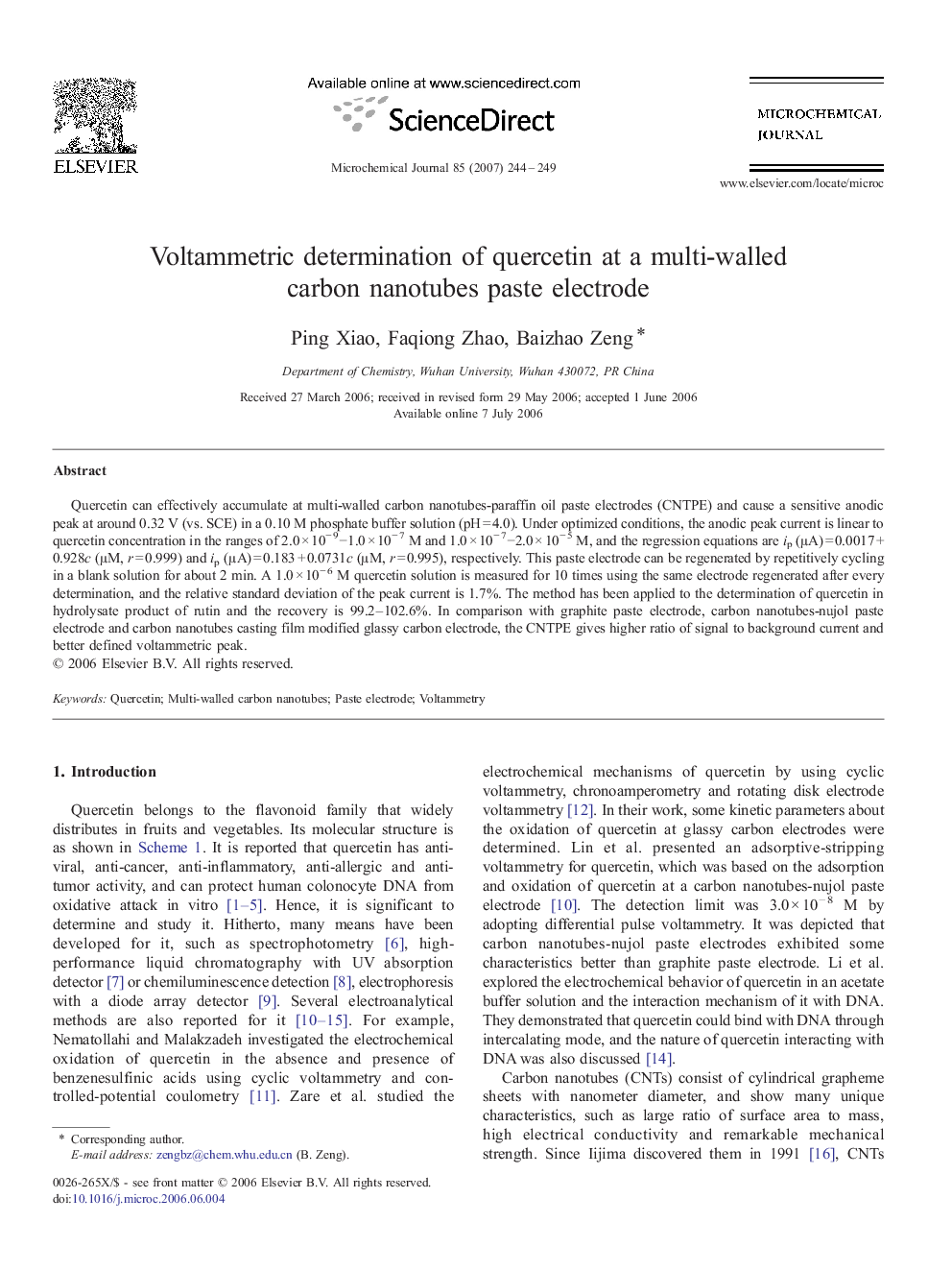| Article ID | Journal | Published Year | Pages | File Type |
|---|---|---|---|---|
| 1228454 | Microchemical Journal | 2007 | 6 Pages |
Quercetin can effectively accumulate at multi-walled carbon nanotubes-paraffin oil paste electrodes (CNTPE) and cause a sensitive anodic peak at around 0.32 V (vs. SCE) in a 0.10 M phosphate buffer solution (pH = 4.0). Under optimized conditions, the anodic peak current is linear to quercetin concentration in the ranges of 2.0 × 10− 9−1.0 × 10− 7 M and 1.0 × 10− 7−2.0 × 10− 5 M, and the regression equations are ip (μA) = 0.0017 + 0.928c (μM, r = 0.999) and ip (μA) = 0.183 + 0.0731c (μM, r = 0.995), respectively. This paste electrode can be regenerated by repetitively cycling in a blank solution for about 2 min. A 1.0 × 10− 6 M quercetin solution is measured for 10 times using the same electrode regenerated after every determination, and the relative standard deviation of the peak current is 1.7%. The method has been applied to the determination of quercetin in hydrolysate product of rutin and the recovery is 99.2–102.6%. In comparison with graphite paste electrode, carbon nanotubes-nujol paste electrode and carbon nanotubes casting film modified glassy carbon electrode, the CNTPE gives higher ratio of signal to background current and better defined voltammetric peak.
